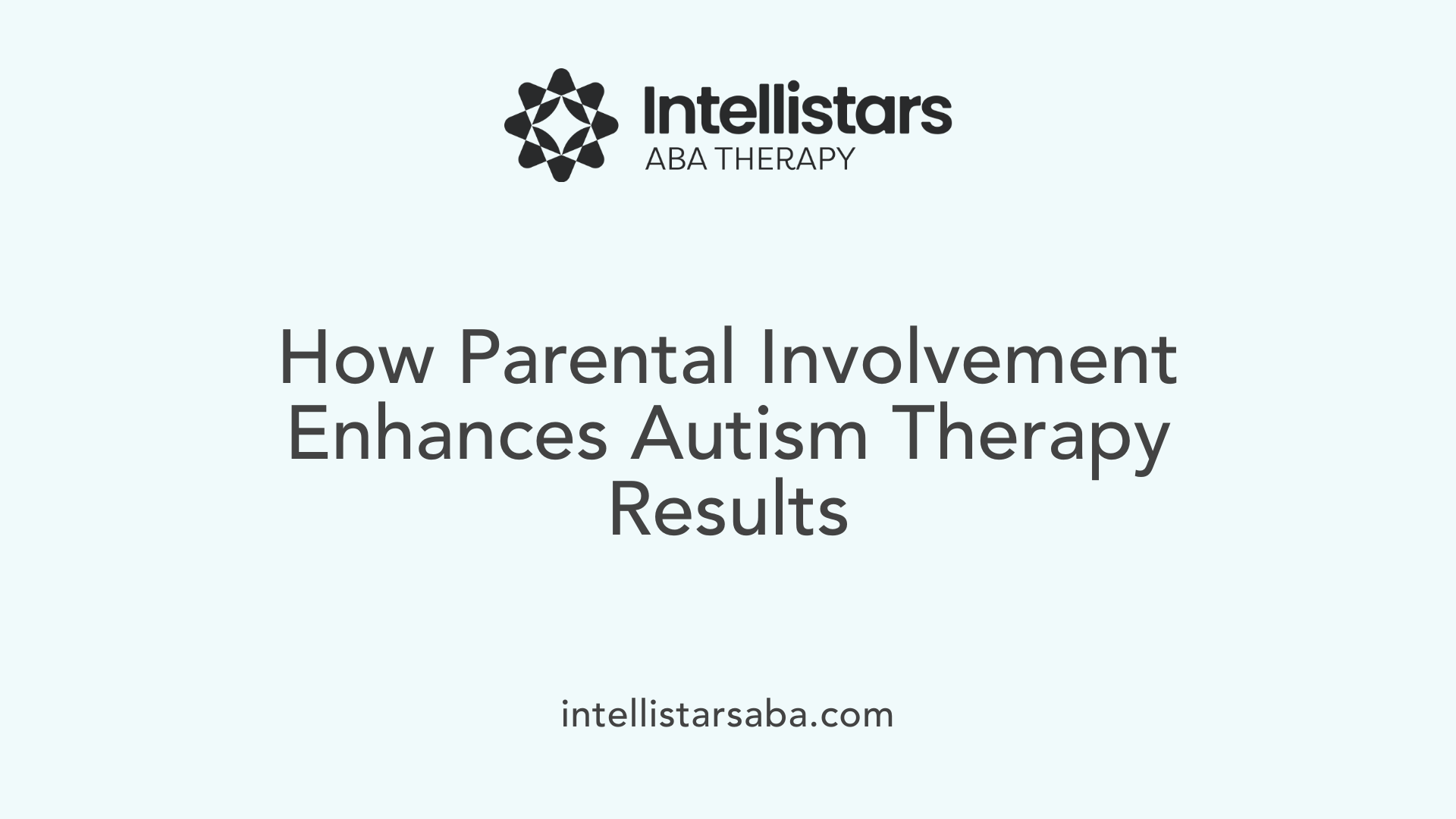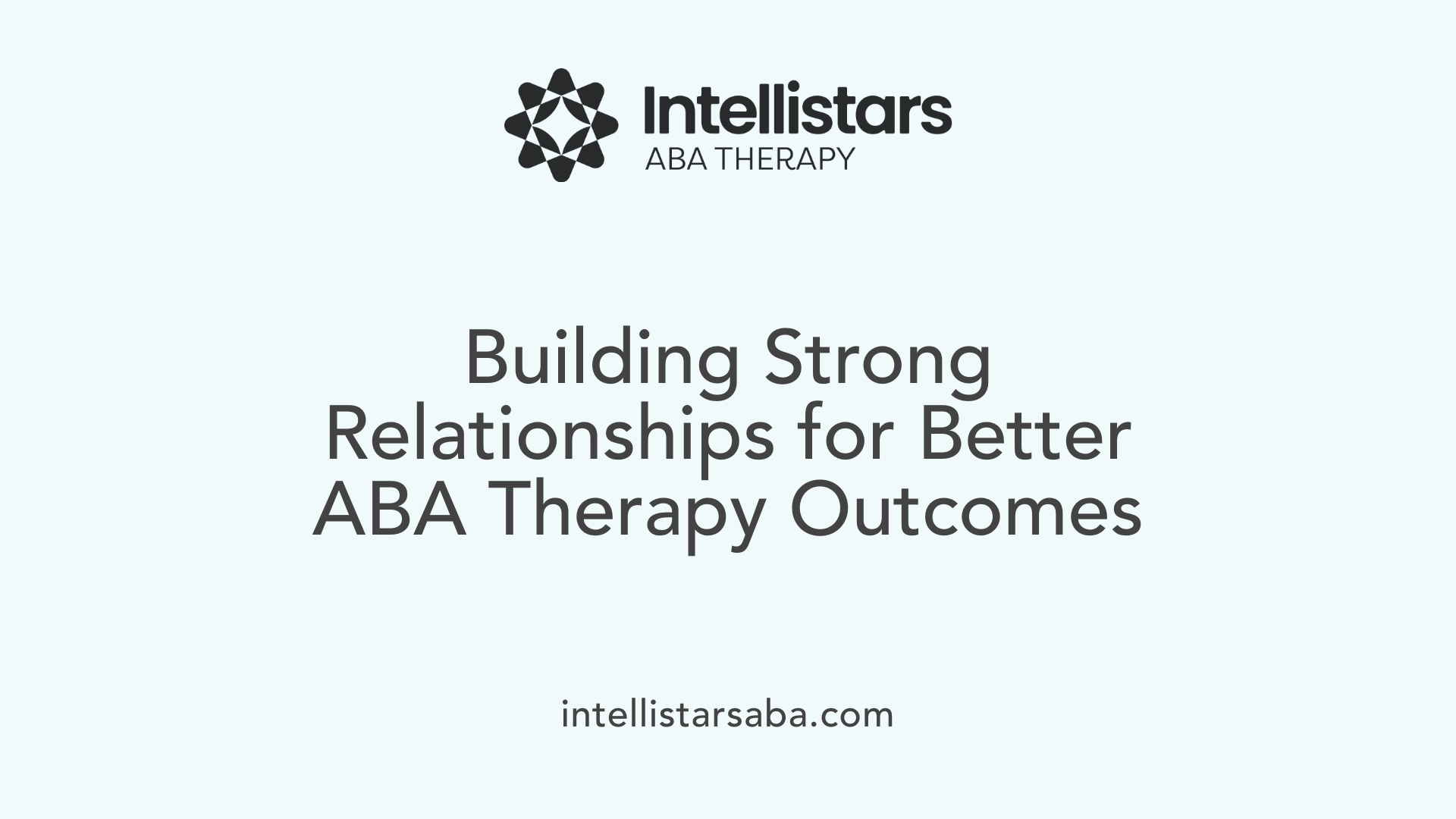Understanding the Critical Role of Parent-Child Dynamics
In the realm of autism intervention, Applied Behavior Analysis (ABA) stands out as a highly effective, evidence-based approach. Central to its success is the quality of interactions between parents and children. This article explores how positive parent-child relationships influence ABA therapy outcomes, and the practical strategies that can foster these vital connections.
The Fundamental Role of Parent-Child Interactions in ABA Therapy

What is the significance of positive parent-child interactions in ABA therapy?
Positive parent-child interactions are crucial to the success of Applied Behavior Analysis (ABA) therapy. They create a nurturing environment where children feel emotionally safe, which supports their willingness to engage and learn new skills. When parents actively participate in their child's therapy, they build trust and strengthen emotional bonds, making it easier for children to accept guidance and reinforcement.
Research shows that shared positive affect, meaning moments of joy, praise, and connection, increase throughout the course of therapy. These interactions are linked to noticeable improvements in children’s behaviors, communication abilities, and daily living skills. Active collaboration between parents, licensed therapists, and children ensures that interventions are consistent and tailored to the child's needs, aiding the generalization of skills across home, school, and community settings.
Equipping parents with proper training and education empowers them to accurately apply ABA techniques at home. This reinforcement accelerates progress because children benefit from consistent expectations and positive reinforcement across environments. As a result, children develop not only improved behaviors but also stronger emotional resilience.
In summary, fostering positive parent-child interactions within ABA therapy enhances emotional well-being and facilitates learning, ultimately leading to more meaningful and lasting improvements in children with autism.
Parent Involvement as a Catalyst for Improved Therapy Outcomes

How does parent involvement influence therapy outcomes for children with autism?
Active participation by parents plays a vital role in enhancing the success of ABA therapy for children with autism. When parents are engaged, they help extend the therapy's benefits beyond clinical settings into everyday life. This ongoing reinforcement facilitates the generalization of skills such as communication, social interactions, and daily living skills.
Research shows that parent-implemented interventions significantly improve behavioral and social outcomes. Meta-analyses of randomized controlled trials reveal a moderate to strong positive effect (g≈0.55), which benefits not only the child's development but also the well-being of parents. Parents who participate in coaching sessions and collaborate in setting goals are better equipped to support consistent learning and emotional growth at home.
Moreover, involving parents increases children’s motivation and adherence to routines. When parents reinforce positive behaviors through praise, rewards, and structured activities, children tend to participate more actively and develop confidence in their abilities.
Parental involvement also empowers caregivers by boosting their self-efficacy—their belief in their capacity to influence their child's progress. This sense of control reduces feelings of frustration and family stress, creating a more positive environment conducive to growth.
Overall, parent engagement is integral to achieving meaningful, lasting improvements. It helps children generalize learned skills across various settings and promotes sustainable behavioralchangesthat can last well beyond formal therapy sessions.
| Benefits of Parent Engagement | Impact on Therapy Outcomes | Supporting Details |
|---|---|---|
| Skill generalization | Better transfer of skills to home and community | Practice across settings reinforces learning |
| Increased motivation | Higher participation and compliance | Rewards and praise enhance engagement |
| Empowerment | Parents feel capable and confident | Boosts parental self-efficacy and reduces stress |
| Sustained progress | Long-term maintenance of skills | Ongoing reinforcement and collaboration |
The Significance of Educating Parents on Interaction Techniques

Why is parent education about interaction techniques important in ABA?
Parent education about interaction techniques in ABA forms a cornerstone in effective autism therapy. When parents understand how to reinforce desirable behaviors and manage challenging ones, they become vital partners in their child's developmental journey.
Teaching parents about reinforcement strategies is particularly crucial. Positive reinforcement involves pairing a child's preferred activity or item with a behavior to encourage repetition. For example, praising a child for sharing toys or using a reward system like stickers boosts motivation and promotes social behaviors.
Consistency and skill generalization are other essential aspects. When parents are trained to apply ABA techniques consistently across different settings—home, school, and community—children can transfer learned skills more effectively. Uniform responses help reduce confusion, making behaviors more predictable and increasing the likelihood of sustained improvements.
Family dynamics are equally affected by parent education. When families work together through shared understanding, it reduces conflicts and fosters a supportive environment. Collaborative approaches, including goal setting and regular communication with therapists, help align intervention strategies and reinforce behaviors outside of formal therapy sessions.
Moreover, supporting parents to feel confident and capable directly impacts their child's progress. When parents are involved and educated, they better understand their child's needs, which leads to stronger emotional bonds, improved problem-solving, and enhanced overall family well-being.
| Aspect | Description | Importance |
|---|---|---|
| Reinforcement Strategies | Using praise, rewards, or tangible incentives to increase desired behaviors | Encourages positive behaviors and motivation |
| Consistency and Generalization | Applying strategies uniformly across settings and people | Ensures skills are maintained and transferred |
| Family Dynamics | How family relationships and communication styles influence intervention | Promotes a cohesive and supportive environment |
Investing in parent education not only amplifies therapy outcomes but also empowers families by fostering a collaborative, confident, and resilient approach to development. When parents learn effective interaction techniques, they become active advocates and supporters, helping their children thrive across all areas of life.
Strategies for Fostering Positive Parent-Child Interactions During ABA
What strategies can be used to foster positive interactions between parents and children during ABA therapy?
Enhancing parent-child interactions within ABA therapy involves a combination of education, practical skills, and ongoing support. Parent training programs are a cornerstone, teaching specific techniques like positive reinforcement, modeling desired behaviors, and maintaining clear, consistent communication. These programs empower parents to become active facilitators of their child's development.
Using visual aids and establishing structured routines also contribute significantly. Visual tools such as picture cards, visual schedules, and social stories help children understand expectations and reduce anxiety. Routine activities like brushing teeth or preparing for bed, when supported by visuals, become opportunities for shared engagement and learning.
Shared activities and collaborative coaching are vital for building bonds and reinforcing skills. Activities like cooking together, playing structured games, or practicing turn-taking foster emotional connections while teaching social skills. During these activities, therapists often use live coaching to demonstrate techniques, then guide parents as they practice, ensuring confidence and competence.
Ongoing coaching and feedback are essential components. They help parents refine their approaches and adapt to their child's changing needs. Regular communication with professionals, setting realistic goals, and celebrating small successes nurture a positive environment.
Creating a supportive atmosphere that prioritizes positive interactions, understanding, and patience enhances social and emotional development. When parents actively participate and learn effective strategies, they not only promote their child's growth but also strengthen their relationship, laying the foundation for long-term success.
The Impact of Parent-Child Relationship Quality on ABA Success

How does the quality of the parent-child relationship affect the success of ABA therapy?
The strength and positivity of the parent-child relationship play a vital role in the effectiveness of ABA therapy. When parents are actively engaged and demonstrate support and cooperation, children tend to be more motivated and willing to participate in therapy activities. This involvement encourages children to apply learned skills consistently at home, which helps in generalizing behaviors across various settings.
A trusting relationship between parents and therapists further enhances communication and collaboration. Such partnerships enable shared goal setting and tailored interventions that better meet the child's unique needs. Moreover, when parents understand ABA principles and are emotionally equipped to support their children, they gain confidence in implementing strategies, leading to more consistent reinforcement and improved outcomes.
Supportive and nurturing parent-child interactions create an environment where children feel safe and valued. This emotional foundation encourages children to take risks, communicate better, and develop social and daily living skills more effectively. Overall, positive relationships foster a collaborative atmosphere that amplifies the benefits of ABA therapy, supporting lasting developmental gains.
Benefits of Positive Interactions on Child Development and Progress

What benefits do positive parent-child interactions provide for a child's development and treatment progress?
Positive interactions between parents and children offer essential advantages that support a child's overall growth and success in therapy. These interactions create a strong emotional foundation, helping children develop emotional regulation skills, which are crucial for managing their feelings and reactions.
Children who experience warm, responsive, and attentive parenting tend to build better cognitive skills. They are more likely to explore, problem-solve, and learn effectively, as these interactions nurture curiosity and confidence. Moreover, positive parent-child engagement enhances social competence. Children learn to interpret social cues, engage in turn-taking, and develop skills for peer interactions, which are vital for social integration.
Research backed by programs like Parent-Child Interaction Therapy (PCIT) demonstrates that when parents actively participate in nurturing routines, children exhibit fewer problematic behaviors. They display improved communication, increased self-esteem, and greater resilience. These positive relationships foster a secure attachment, enabling children to trust their caregivers and feel safe in their environment.
Additionally, such interactions support neurodevelopment by promoting healthy brain growth, especially in early critical periods. This foundation not only improves immediate treatment outcomes but also sets the stage for lifelong emotional and social well-being.
Overall, engaging in positive, responsive interactions strengthens the parent-child bond, boosts emotional security, and facilitates the child's development across multiple domains. These nurturing relationships are instrumental in guiding children through their growth, helping them attain their full potential.
ABA’s Approach to Emphasizing and Incorporating Positive Parent-Child Interactions
Strategies with parents
ABA therapy places a strong emphasis on active parental involvement to maximize the child's developmental gains. One of the primary approaches involves targeted parent training programs that teach caregivers how to implement reinforcement techniques, manage behaviors, and foster communication. These programs equip parents with practical skills, such as praising desired behaviors, using visual aids like picture cards and schedules, and engaging in social exchanges that build emotional bonds.
Parents learn to recognize and respond positively to their child's efforts, which encourages repetition of desirable behaviors. Behavior analysts often provide tailored guidance based on each child's unique needs and family circumstances. This personalized approach ensures that parents are confident and capable of reinforcing progress outside formal therapy sessions.
Ongoing coaching
Continued support through coaching is another critical pillar of integrating positive interactions into daily life. ABA professionals frequently conduct live coaching sessions, including video-feedback interventions, where they observe parent-child interactions remotely or in person. During these sessions, practitioners give constructive feedback and collaboratively plan strategies that fit seamlessly into family routines.
Regular coaching helps parents refine their techniques, troubleshoot challenges, and stay motivated. It also strengthens their understanding of behavior triggers and effective responses, thereby creating a consistent and predictable environment that promotes learning and emotional security.
Integration into routines
Embedding ABA strategies into everyday routines is essential for skill generalization and behavior maintenance. Parents are encouraged to incorporate positive reinforcement, social skills activities, and structured communication opportunities into activities such as mealtime, dressing, play, and community outings.
This integration makes learning natural and meaningful, allowing children to practice skills across diverse settings. It also enhances the child's independence, teaching self-care routines like dressing or brushing teeth through step-by-step guidance embedded in regular activities.
Coupling routine-based interventions with active parental engagement ensures that children benefit from continuous support, fostering developmental progress, and strengthening the parent-child relationship. Consistent, positive interactions become a cornerstone of therapy, encouraging spontaneous use of skills and promoting a nurturing, responsive environment.
Fostering a Collaborative Path to Developmental Success
Positive parent-child interactions are not just beneficial—they are essential for optimizing ABA therapy outcomes. By understanding their importance, actively participating in and applying learned strategies, and fostering strong, trusting relationships, parents can significantly influence their child's developmental trajectory. Through education, collaboration, and consistent practice, families are empowered to create nurturing environments where children with autism can thrive socially, emotionally, and behaviorally. Ultimately, a committed partnership between parents and professionals paves the way for lasting, meaningful progress in autism treatment.
References
- Benefits of ABA Therapy - Blue ABA
- Benefits of ABA Therapy for Children with Autism
- The use of video feedback to promote developmentally supportive ...
- PCIT Therapy-Parent-Child Interaction Therapy Benefits
- Implementing In-Home ABA Therapy
- Choosing a Parent Training Program - Child Mind Institute
- The Importance of Parent Involvement in ABA Therapy
- Effects of Parent-Implemented Interventions on Outcomes of ...






